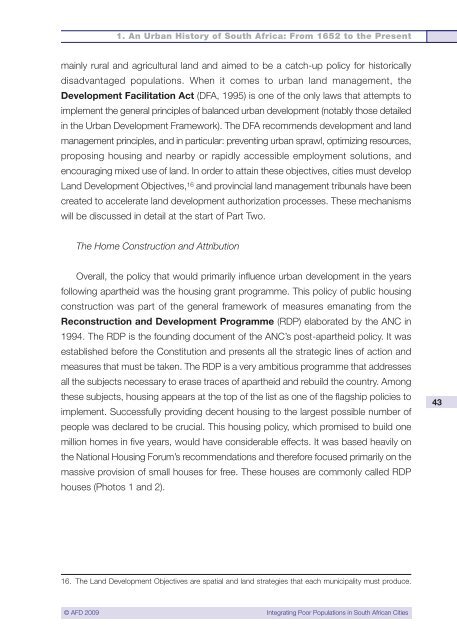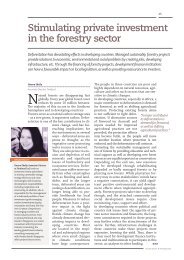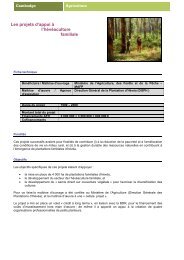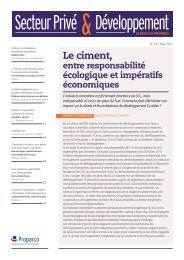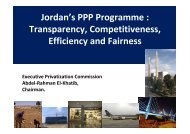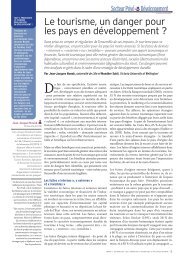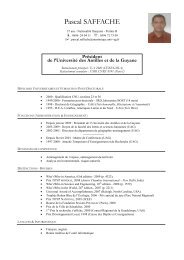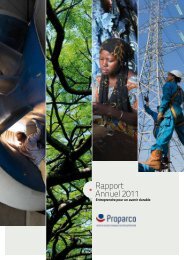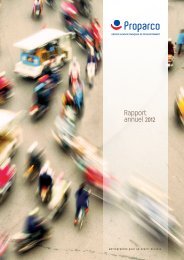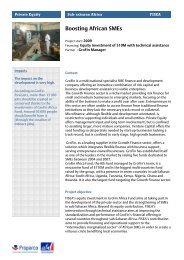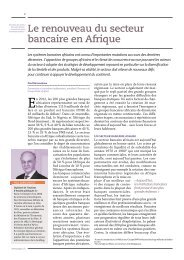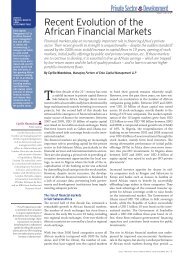Integrating Poor Populations in South African Cities - Agence ...
Integrating Poor Populations in South African Cities - Agence ...
Integrating Poor Populations in South African Cities - Agence ...
You also want an ePaper? Increase the reach of your titles
YUMPU automatically turns print PDFs into web optimized ePapers that Google loves.
1. An Urban History of <strong>South</strong> Africa: From 1652 to the Present<br />
ma<strong>in</strong>ly rural and agricultural land and aimed to be a catch-up policy for historically<br />
disadvantaged populations. When it comes to urban land management, the<br />
Development Facilitation Act (DFA, 1995) is one of the only laws that attempts to<br />
implement the general pr<strong>in</strong>ciples of balanced urban development (notably those detailed<br />
<strong>in</strong> the Urban Development Framework). The DFA recommends development and land<br />
management pr<strong>in</strong>ciples, and <strong>in</strong> particular: prevent<strong>in</strong>g urban sprawl, optimiz<strong>in</strong>g resources,<br />
propos<strong>in</strong>g hous<strong>in</strong>g and nearby or rapidly accessible employment solutions, and<br />
encourag<strong>in</strong>g mixed use of land. In order to atta<strong>in</strong> these objectives, cities must develop<br />
Land Development Objectives, 16 and prov<strong>in</strong>cial land management tribunals have been<br />
created to accelerate land development authorization processes. These mechanisms<br />
will be discussed <strong>in</strong> detail at the start of Part Two.<br />
The Home Construction and Attribution<br />
Overall, the policy that would primarily <strong>in</strong>fluence urban development <strong>in</strong> the years<br />
follow<strong>in</strong>g apartheid was the hous<strong>in</strong>g grant programme. This policy of public hous<strong>in</strong>g<br />
construction was part of the general framework of measures emanat<strong>in</strong>g from the<br />
Reconstruction and Development Programme (RDP) elaborated by the ANC <strong>in</strong><br />
1994. The RDP is the found<strong>in</strong>g document of the ANC’s post-apartheid policy. It was<br />
established before the Constitution and presents all the strategic l<strong>in</strong>es of action and<br />
measures that must be taken. The RDP is a very ambitious programme that addresses<br />
all the subjects necessary to erase traces of apartheid and rebuild the country. Among<br />
these subjects, hous<strong>in</strong>g appears at the top of the list as one of the flagship policies to<br />
implement. Successfully provid<strong>in</strong>g decent hous<strong>in</strong>g to the largest possible number of<br />
people was declared to be crucial. This hous<strong>in</strong>g policy, which promised to build one<br />
million homes <strong>in</strong> five years, would have considerable effects. It was based heavily on<br />
the National Hous<strong>in</strong>g Forum’s recommendations and therefore focused primarily on the<br />
massive provision of small houses for free. These houses are commonly called RDP<br />
houses (Photos 1 and 2).<br />
43<br />
16. The Land Development Objectives are spatial and land strategies that each municipality must produce.<br />
© AFD 2009 <strong>Integrat<strong>in</strong>g</strong> <strong>Poor</strong> <strong>Populations</strong> <strong>in</strong> <strong>South</strong> <strong>African</strong> <strong>Cities</strong>


